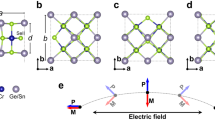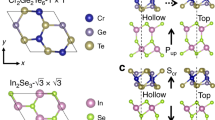Abstract
This is a copy of the slides presented at the meeting but not formally written up for the volume.
Highly efficient control of magnetism in terms of genuinely-electric action in a solid has been a big challenge in condensed matter science and will also widen the bottle-neck of the state-of-art spin-electronics technology. Multiferroics, the materials in which both ferromagnetism and ferroelectricity can coexist, are the prospective candidate which can potentially host the gigantic ME effect. A useful hint to designing of the strong M-P coupling has been gained by the recent discovery of the ferroelectricity in the frustrated magnets, such as perovskite manganites, spinel chromites, etc. The direction of the polarization can be totally determined by the clockwise (CW) or counter-clockwise (CCW) rotation of the transverse-spiral (cycloidal) spin in proceeding along the spiral propagation axis, that is called spin helicity or vector chirality. In those compounds, the spontaneous P can be easily controlled by an external magnetic field of specific direction, such as the generation and/or flopping of the spontaneous polarization. Conversely, the spin helicity, CW or CCW, can be controlled with genuine electric field via the reversal of spontaneous polarization. Furthermore, the clamping between the magnetic and ferroelectric domains can show up, enabling the magnetic (electric) control of the ferroelectric (ferromagnetic) domains. Multiferroics with the strong M-P correlation may also provide a unique arena to test new optical effects, say the magnetoelectic optical effects. This includes the so-called magnetization-induced second harmonic generation (MSHG) and the nonreciprocal dichroism dependent on the light propagation direction (but not on the light polarization). The former can be applied to probe the interface magnetism as well, while the latter may have potential of producing new optical devices with nonreciprocal functions. Strategy for exploring such multiferroics as showing strong M-P coupling and novel optical functions is argued in terms of the designed spin superstructure and tailor-made materials.
Similar content being viewed by others
Author information
Authors and Affiliations
Rights and permissions
About this article
Cite this article
Tokura, Y. Multiferroics – from frustrated lattice to tailored interface. MRS Online Proceedings Library 1000, 401 (2007). https://doi.org/10.1557/PROC-1000-L02-02
Published:
DOI: https://doi.org/10.1557/PROC-1000-L02-02




